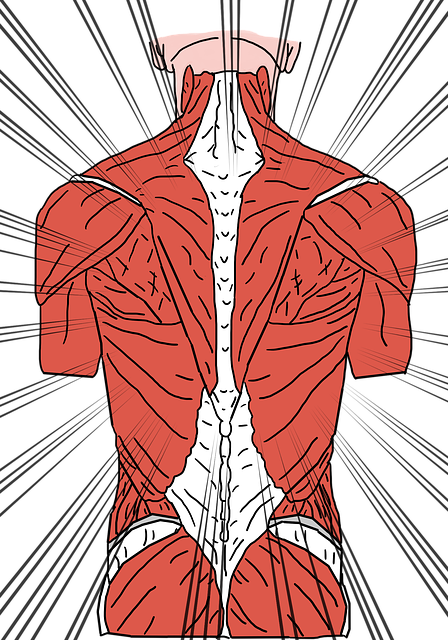Red Light Therapy (RLT) is a non-invasive treatment using specific red light wavelengths to interact with bodily tissues, gaining popularity in medical and wellness circles for its therapeutic benefits. It accelerates muscle repair, reduces inflammation, and enhances athletic performance by stimulating mitochondria production, promoting blood vessel growth, and speeding up collagen synthesis. Key applications include treating DOMS, sports injuries, and post-surgery recovery. Future prospects involve advanced technologies like HIFRL and NIR devices, potentially leading to wearable RLT devices for athletes. However, ethical considerations, safety precautions, and standardized treatment parameters are crucial as its popularity grows.
Red light therapy (RLT) is emerging as a game-changer in rehabilitation and performance enhancement. This non-invasive treatment uses specific wavelengths of red light to stimulate cells, aiding in muscle repair and tissue regeneration. While current applications focus on pain relief and scar reduction, future advancements promise more targeted and efficient therapies. From advanced laser technologies to wearable devices, RLT’s potential to revolutionize physical therapy and athletic recovery is undeniable, as we explore its scientific basis, ethical considerations, and promising prospects.
Understanding Red Light Therapy and Its Current Applications in Rehabilitation
Red Light Therapy (RLT), also known as low-level laser therapy, is a non-invasive treatment that uses specific wavelengths of red light to interact with the body’s tissues. This technology has gained significant attention in the medical and wellness fields due to its potential therapeutic benefits. When applied to rehabilitation and performance enhancement, RLT is increasingly recognized for its ability to accelerate muscle repair and reduce inflammation.
In current practice, RLT is used to treat various conditions related to muscle and tissue damage, including delayed onset muscle soreness (DOMS), sports injuries, and post-surgery recovery. By penetrating the skin’s layers, red light is believed to stimulate cellular processes, such as increasing mitochondria production and promoting collagen synthesis. These effects contribute to improved circulation, reduced pain, and enhanced muscle repair mechanisms. As research continues, the scope of RLT applications in rehabilitation expands, offering promising prospects for athletes, patients, and individuals seeking to optimize their physical performance and recovery.
The Science Behind Red Light Therapy for Muscle Repair
Red light therapy, a non-invasive treatment modality, has gained significant attention for its potential in accelerating muscle repair and enhancing athletic performance. The science behind this lies in the red light’s interaction with our cells. When absorbed by mitochondria—the powerhouses of cells—red light energy stimulates adenosine triphosphate (ATP) production, which is crucial for cellular functions, including muscle contraction and recovery. This increased ATP availability facilitates a range of repair processes: it reduces inflammation, promotes the growth of new blood vessels, and accelerates the synthesis of collagen, all vital for regenerating damaged muscle tissue.
Moreover, red light therapy can help mitigate the buildup of lactic acid post-exercise, which is often linked to muscle soreness. By enhancing circulation, it delivers essential nutrients to tired muscles, expediting their recovery and preparing them for subsequent workouts. As such, red light therapy presents a promising avenue for athletes looking to optimize their rehabilitation protocols and achieve peak performance.
Future Prospects: Advanced Technologies and Their Impact on Performance Enhancement
The future of red light therapy holds immense potential for enhancing athletic performance and accelerating rehabilitation processes. Advanced technologies, such as high-intensity focused red light (HIFRL) and near-infrared (NIR) devices, are set to revolutionize the way we approach muscle repair with red light therapy. These innovations offer deeper tissue penetration, allowing for more efficient stimulation of cellular activities essential for muscle regeneration. With their ability to target specific areas, they can optimize recovery times and potentially enhance performance by improving muscle strength and endurance.
Furthermore, future developments may include wearable devices that integrate red light technology into everyday athletic gear, making treatment accessible and convenient. This accessibility could foster a new era of performance enhancement where athletes can actively participate in their recovery process. As research progresses, we can expect to uncover more tailored applications of red light therapy, pushing the boundaries of what’s possible in sports science and rehabilitation.
Ethical Considerations and Safety Precautions for Widespread Adoption
As red light therapy becomes increasingly popular for muscle repair and rehabilitation, ethical considerations and safety precautions must be at the forefront of its widespread adoption. One key concern is ensuring informed consent from patients, especially regarding potential side effects and long-term impacts that may not yet be fully understood. Transparency in treatment protocols and clear communication about expected outcomes are crucial to maintaining patient trust and autonomy.
Additionally, standardization of treatment parameters such as light intensity, wavelength, and exposure duration is essential for safety. Clinical trials should be conducted rigorously to establish evidence-based guidelines, particularly when applying red light therapy for various conditions beyond its established uses. Regular monitoring of adverse events and continuous evaluation of the therapeutic benefits versus risks will foster responsible integration of this technology into rehabilitation practices and sports performance enhancement programs.
Red light therapy (RLT) has shown significant potential in the fields of rehabilitation and performance enhancement, particularly for muscle repair. As technology advances, we can expect more precise and targeted RLT applications, improving patient outcomes and athletic performance. However, as with any emerging technology, ethical considerations and safety precautions must be addressed to ensure its widespread adoption. Further research and clinical trials will play a crucial role in unlocking the full potential of RLT, making it an exciting game-changer for both medical and sporting industries.
